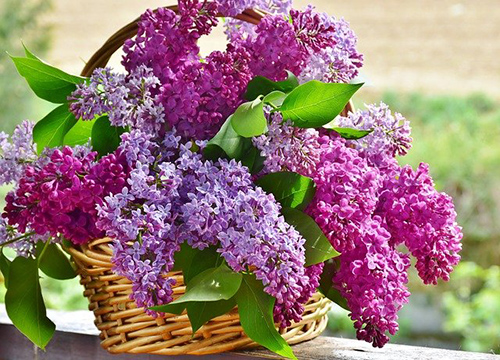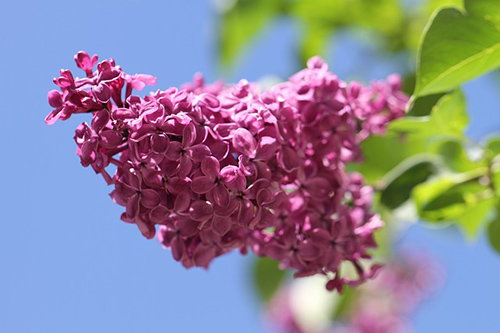Contents
According to an Arabic folktale, God put the beautiful flowers of the lilac plant on the earth, which only last a few hours before withering, so that human beings think about ephemeral human beauty. The Arabs were the first to introduce this plant to Spain in the 10th century. It spread to the rest of Europe, and from the 16th century onwards to America.

Lilac Plant Scientific Facts
- French: Lilas.
- Spanish: Lilo.
- Environment: Native to Iran and Turkey, it is now cultivated as an ornamental plant in several warm areas of Europe and America.
- Description: Beautiful flowering shrub of the Oleaceae family, growing from 1 to 1.5 m high. Its flowers gather in exuberant bouquets with an intense aroma.
- Parts of the plant used medicinally: The leaves, the fruit, and the bark.

Healing Properties and Indications
The lilac plants’ leaves, bark, and fruit contain a glycoside and a bitter substance known as syringopicrin, similar to quinine. The properties of Lilac are due to these substances.

- Stomachic tonic, digestive, appetizer, and astringent: It is recommended for poor digestion and intestinal flatulence.
- Febrifuge and sudorific: Especially the lilac bark. It is recommended for fever afflictions or influenza.
- Antirheumatic: Lilac is very effective for gout crises as an anti-inflammatory substance.
How to use Lilac
- Infusion with 30g of leaves, bark, or fruits per liter of water. Drink three cups daily. When a febrifuge effect is wanted, prepare the infusion using only the bark.
DISCLAIMER: All content on this website is presented solely for educational and informational objectives. It would be best to not rely on the information provided as a replacement for advice, diagnosis, or treatment from a qualified medical expert. If you are pregnant, nursing, or have any preexisting medical concerns, you should talk to your doctor before using any herbal or natural medicines.
REFERENCES
- George D. Pamplona-Roger, M.D. “Encyclopedia of Medicinal Plants.” George D. Pamplona-Roger, M.D. Encyclopedia of Medicinal Plants. Ed. Francesc X. Gelabert. vols. 2 San Fernando de Henares: Editorial Safeliz, 2000. 472. Print.
- Kim, S. A., Kang, O. H., Kwon, D. Y., & Cryptotanshinone, a Compound of Salviae miltiorrhizae Radix, Inhibits Herpes Simplex Virus Type 1 and Type 2 Infections In Vitro. Molecules, 21(9), 1247. (2016)
- Chen, J., Lin, M., & Yang, F. Antioxidant and anti-inflammatory properties of Lilac (Syringa) extract. Food Science and Human Wellness, 8(2), 192-198. (2019)
- Trivellini, A., Lucchesini, M., & Maggini, R. A. (2016). Linalool content and antioxidant activity of seven Syringa species from Italy during different phenological stages. Molecules, 21(7), 839.
- Park, K. J., Son, J. Y., Oh, M. M., & Lee, S. K. (2019). Linalool-rich essential oil suppressed the growth of Botrytis cinerea and Penicillium italicum and increased the shelf life of mandarins. Food Chemistry, 277, 736-742.
- Huang, L. C., Hsu, Y. R., Hsu, C. C., & Coumarins and lignans from Goniothalamus cheliensis and their anti-inflammatory activity. Journal of Natural Products, 72(7), 1310-1314. (2009)
Last update on 2025-06-04 / Affiliate links / Images from Amazon Product Advertising API




